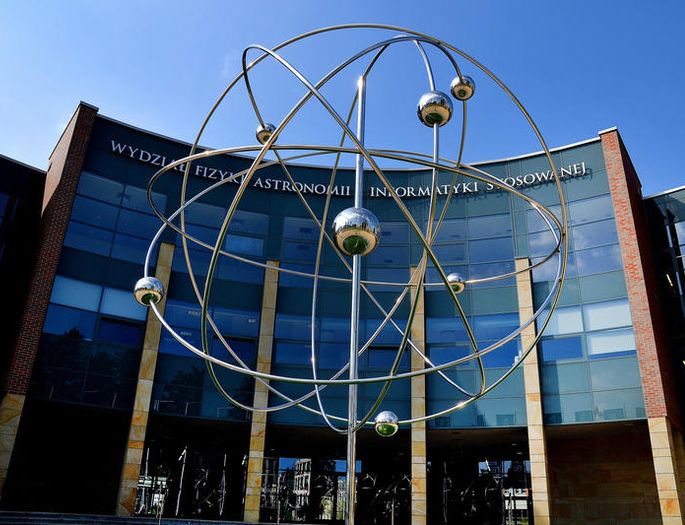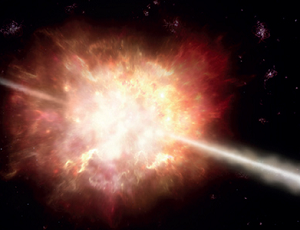
Kraków scientists offer new insight on gamma-ray bursts (GRB), registered up to this point by the devices at the Neils Gehrels Swift Observatory. Their work has been published in the Astrophysical Journal Supplements Series.
The analysis of gamma-ray bursts was performed by an international team led by Dr hab. Maria Giovanna Dainotti, an adjunct academic at the Jagiellonian University, researcher at the Space Science Institute in Colorado and mentor of the Science Undergraduate Laboratory Internships (SULI) programme at the Stanford University. One of the paper’s co-authors is Aleksander Lenart, a student of astronomy at the Jagiellonian University. Their research has received a considerable financial support from SULI.
The innovative three-dimensional analysis of the relationships between correlated GRB parameters and their physical properties, without making any prior assumptions. It’s a giant step forward in understanding gamma-ray bursts as new standard candles – universal markers of distance in the Universe – based on an in-depth study of the mechanisms of their emission.
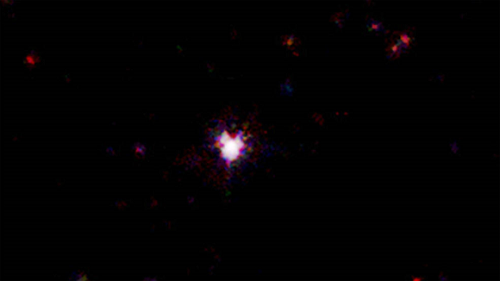
Strictly speaking, researchers have analysed 455 gamma-ray bursts captured by the Swift satellite, both from the astrophysical point of view (mechanisms of emissions as well as their sources) and the cosmological perspective. Such research speeds up the process of turning gamma-ray bursts into standard candles, celestial objects with known absolute magnitudes that can be calculated based on the relationship between these magnitudes and other properties independent of distance. This, in turn, allows scientists to measure the distance between us and other astronomical objects. Currently, the most distant standard candles are Ia-type supernovas; gamma-ray bursts can be observed over a larger distance (13.2 billion light years vs. up to 11 billion light years).
GRBs are very important from the astronomical point of view, since they are connected to the most powerful high-energy events in the Universe. In the span of just a few seconds, during the initial phase of gamma radiation photon ejection, also known as prompt emission, they emit an amount of energy compared to that which our Sun emits over its entire lifespan. Because of these extreme energy levels, GRBs can be observed from very far away. The furthest ones can be traced back to the time period just after the beginning of the Universe, shortly after the Big Bang. According to the theory, GRBs are caused by collisions of two neutron stars or a neutron star and a black hole, or, alternatively, are the result of the gravitational collapse of an extremely heavy star (at least 20 times heavier than the Sun).
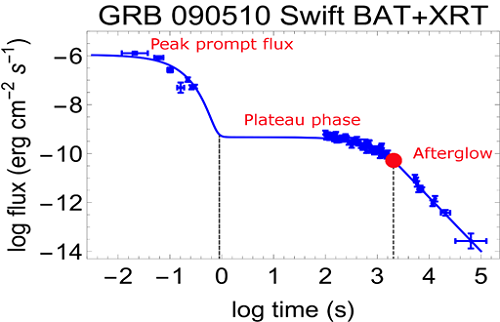
Gamma-ray bursts are interesting both in the context of individual gamma events as well as more broad statistical assessments. The latter ones are the main focus of the paper in discussion. The peak prompt emission of a GRB, usually made up of gamma photons, lasts between several and several thousand seconds. The afterglow phase, which happens immediately after, can last anywhere from a few seconds to a few years. That afterglow is most commonly observed through X-ray telescopes and as visible light, though in rare cases it can also be registered on lower-energy radio waves.
GRBs exhibit a great variety when it comes to sources and their environment, which means that the process of ‘turning them’ into new standard candles is much harder. In reality, scientists are still working on finding common elements amongst their diverse properties. It was possible to prove that around 50% of gamma-ray bursts observed by the Swift satellite has a plateau emission phase in their X-ray light curves. The paper focuses on those GRBs that exhibit this feature (Fig 2.).
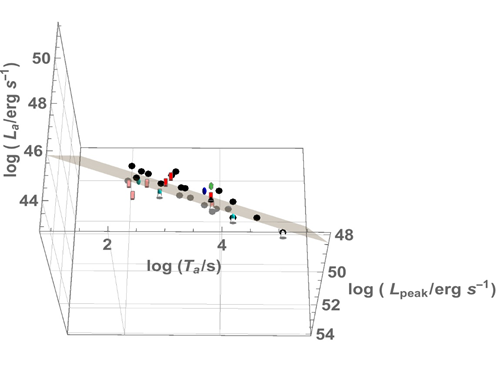
The paper presents a new methods of GRB standardisation based on comprehensive studies of their sources. The scientists have managed to determine the environments and cooling regimes for most of the GRBs in the sample, and then test out their three-dimensional relationship, which is a mathematical function of the time of their occurrence, the length of the plateau phase, peak luminosity of the prompt emission, and the luminosity at the end of the plateau phase for those environments. during the experiments, they have managed to prove that classifying GRBs based on the knowledge of their sources and cooling regimes may be the key to turning GRB into standard candles.
Original text: www.nauka.uj.edu.pl





